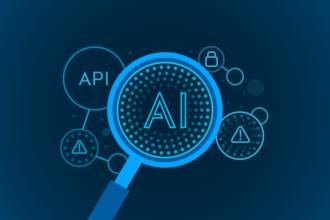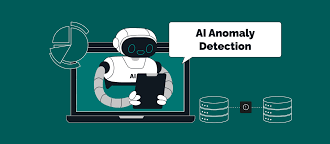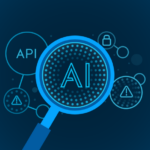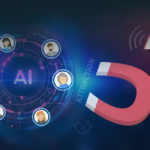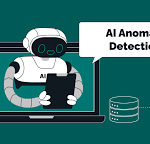In this article, we are going to talk about the world of Artificial Intelligence (AI). So what is AI? Well, you can think of it as magic that lets computers imitate human intelligence such as learning and problem-solving skills. It powers virtual assistants like Siri or Alexa, recommendation systems on Netflix or self-driving cars – any system which exhibits seemingly intelligent behavior.
This covers machine learning with its neural networks, natural language processing that enables chatbots to understand us better than our significant others ever could (I’m looking at you, Siri), vision algorithms which allow robots like SpotMini see where they’re going;
All these technologies fall under artificial intelligence because their purpose is to do things normally done by people. Strap yourself in because we’re diving deep into this game-changing tech while keeping things simple for humans who aren’t computer nerds like me!
What is Artificial Intelligence?
Artificial Intelligence and written as AI is, in fact, the sorcery that empowers computers and robots to think like human beings, learn things like humans do, as well as perform human-like tasks. It is a kind of brain for machines which helps them understand language too just like us recognize patterns or make decisions on the basis of data available.
AI has penetrated into our everyday lives — it powers voice assistants such as Siri or Google Assistant; it drives innovations within healthcare industry, finance sector transportation systems management among other areas.

Machine learning is one of its branches where computer systems are taught how they can improve their own performance with time while natural language processing allows them to read and generate any form of human speech easily.
Ultimately what artificial intelligence does boils down to this: it makes machines smarter faster better so that we can use them for solving difficult problems improving our lives in general.
How does Artificial Intelligence work?
Artificial intelligence (AI) makes use of algorithms, computing power and data to mimic human-like thinking in machines. Deep learning models are only as effective as the amount of information they have been exposed to. This is how AI works:
Data acquisition: The process of learning requires an abundance of relevant data. Raw data can be fetched from different sources like texts, pictures or even sensor readings.
Data pre-processing: Before being fed into an AI algorithm for analysis, it is important that such data must be cleaned up and properly organized. Such steps ensure that information is put into a form which the AI system can easily understand and deal with effectively.
Algorithms: These are rules on which systems learn from given datasets. Some algorithmic procedures may include decision trees while others more complex like neural networks; all depend on what type or model of machine learning has been implemented towards achieving desired objectives such as pattern recognition among others based on historical inputs provided during training phase.
Training: In order to minimize errors made by these algorithms during their work time period as well improve efficiency level achieved over each task attempted; large volumes artificial intelligence needs repetitive cycles where it learns from supplied preprocessed input until satisfactory output obtained thereof.
Recognition: This part involves giving the system new unseen examples so that it can predict or categorize each sample accordingly using its learned knowledge base acquired through previous stages i.e., training sets
Feedback loop: Feedback loops enable continuous improvement over time because when predictions turn out wrong there’s always room for adjusting one’s approach after considering feedback received through iterative processes involving many training iterations in most cases before final results become accurate enough for deployment purposes under particular conditions if necessary then update current models with fresh findings gained by going back collecting further samples along same lines thus making them capable enough eventually leading to better outcomes
What are the types of Artificial Intelligence?
Artificial intelligence (AI) can be divided into 4 types depending on their capabilities and functions:
Reactive Machines: The most basic form of AI is reactive machines that can respond to specific inputs without any memory or learning ability. They work only with predefined rules and do not learn from past experiences. For example, chess-playing programs analyze current game states to make the best moves but do not learn or improve over time.
Limited Memory: Limited memory AI systems, also known as reactive machines with limited memory, can take decisions based on both current input and past experience stored in memory.
These systems are able to learn from historical data to enhance their performance over time but still have limitations in terms of generalization or adaptation to new situations. For instance, self-driving cars utilize sensor data for road navigation while considering decisions made in previous driving instances.
Theory of Mind: Theory of mind AI refers to systems capable of understanding and inferring mental states, intentions, and emotions of others. Such AI possesses a higher order cognitive understanding and can engage in human-like reasoning about beliefs, desires, and emotions of other agents.
While it remains largely within research and development stage, theory of mind AI holds potential for application in social robotics, virtual assistants as well as human-computer interaction.
Self-Awareness: Self-awareness represents the highest level of artificial intelligence whereby systems not only comprehend their environment but also interact with it having consciousnesses similar to those found in humans.
This type is currently speculative without any practical implementations. Realizing self-aware AI would necessitate significant advances in consciousness studies together with ethical considerations surrounding artificial awareness vis-à-vis human consciousnesses.
Why is Artificial Intelligence important?
There are a lot of reasons why artificial intelligence (AI) is important since it has the ability to change almost every part of human society. Below are some main points on why AI matters:
Efficiency and Automation: AI has the capacity to automate repetitive tasks thus Businesses can streamline processes and optimize resource allocation leading to increased efficiency and productivity. This can allow humans to have time for more creative work.
Enhanced Decision Making: With AI systems being able to analyze large volumes of data as well as detecting patterns that may be invisible to humans; decision making becomes informed by facts hence becoming more accurate especially in fields such as finance, healthcare logistics among others which minimizes risks while maximizing output.
Innovation and Discovery: Artificial intelligence sparks off creativity through realization of new products services or solutions which were unimaginable before this point was reached. There is potential for these AI-driven breakthroughs in areas ranging from personalized medicine all the way down self-driving cars that solve complex problems and improve our standard of living.
Personalization and Customization: Through recommendation systems chatbots etcetera, machines can make experiences personalized or customized according to individual preferences behaviors thereby improving customer satisfaction levels across different platforms industries alike.
Healthcare Advances: Medical diagnosis planning drug discovery treatment are just but few examples where artificial intelligence could revolutionize health care delivery systems . Such tools will help analyze medical images predict patient outcomes suggest appropriate interventions thus leading better patient care results.
Global Challenges: AI if utilized properly may contribute towards solving world’s greatest challenges like climate change poverty disease etc . Environmental data analysis disaster response optimization energy consumption among other things can be done using these technologies thereby creating sustainable future for all .
What are the advantages and disadvantages of Artificial Intelligence?
Artificial intelligence (AI) has many benefits but also some drawbacks. Below is a breakdown of the pros and cons:
Advantages:
Efficiency and Productivity: In various sectors, AI can automate repetitive tasks, which makes them more efficient. This creates time for employees to undertake complex duties demanding creativity.
Data Analysis and Decision-Making: Organizations can now make data-driven decisions faster and with greater certainty thanks to the ability of AI systems to quickly analyze huge amounts of data. It helps in better strategic planning and leads to improved outcomes.
Innovation and Creativity: Through enabling creation of things that were unimaginable before, AI promotes innovation. Industries will be transformed by such inventions driven by artificial intelligence as self-driving cars among others, thus raising the quality of life.
Personalization and Customization: Chatbots or recommendation systems are among the AI technologies capable of personalizing services based on individual preferences or behavior. Such customization levels up user satisfaction across different platforms/industries.
Healthcare Advancements: Medical diagnosis support, drug discovery assistance planning treatment could all be revolutionized with help from AI tools. Patient care is enhanced when machines powered by this technology interpret medical images predict patients’ responses recommend tailored treatments.
Disadvantages:
Job Displacement: There is fear about job loss due higher automation rates through use of artificial intelligence. Some sectors may experience unemployment waves alongside economic upheavals following redundancy caused by widespread introduction or adoption of certain types/levels/kinds/forms/categories/classes/sorts/breeds/varieties/species/groups/families/sets/collections/assemblages/aggregates/ensembles/combinations/unions/joins/mergers/gatherings/clusters/clumps/huddles/troops;businesses could collapse too!
Bias And Fairness: The integrity fairness an AI system largely depends on how unbiased it is during training where the input data come from diverse sources representing all groups fairly without discrimination especially in hiring, lending and criminal justice. This remains a challenging task.
Privacy And Security Risks: Many data are required by AI thus privacy concerns come into play regarding storage or processing. If wrongly accessed or AI algorithms misused, personal security might be compromised leading to harm against individuals as well as organizations.
Dependence And Overreliance: If people start relying too much on themselves not thinking critically because they believe everything should be done through machines then one day when there is failure; it may cost lives. Humans must always keep an eye on these systems failure could have serious consequences if human intervention is limited.
Ethical Concerns: AI raises numerous ethical questions mainly focusing on accountability transparency and impact towards societal values .Therefore following guidelines that adhere to principles which govern the development and deployment of Artificial Intelligence is vital in order to avoid or minimize potential negative effects
What are examples of Artificial Intelligence technology and how is it used today?
For sure, here are more examples of Artificial Intelligence (AI) technology and what they are currently being used for:
Natural Language Processing (NLP): NLP is utilized in various ways, for instance virtual assistants like Amazon Alexa and customer service chatbots. Such systems can understand human language and respond to it, thus enabling more natural interactions between people and machines.
Computer Vision: Computer vision allows machines to see and interpret visual information from the real world. Facial recognition systems for security and authentication, object detection and tracking in self-driving cars or quality control in manufacturing processes are some of its applications.
Generative Adversarial Networks (GANs): GANs mimic real-world data distributions by generating new data samples. They can be used to create realistic images, videos and audio as well as for data augmentation when training machine learning models.
Recommendation Systems: AI algorithms are used by recommendation systems to analyze user preferences and behavior before suggesting relevant products, content or services. Examples include personalized recommendations on streaming platforms such as Netflix or Spotify; also product recommendations on e-commerce sites like Amazon.
Autonomous Vehicles: Self-driving cars which navigate without human intervention are powered by AI. These vehicles perceive their environment using sensors, cameras etc., plan routes with the help of artificial intelligence algorithms then make driving decisions based on that information.
Healthcare Diagnostics: Deep learning algorithms among other AI techniques can be employed in healthcare to analyze medical images e.g X-rays or MRIs which assist doctors in diagnosing diseases like cancer. Diagnostic tools enhanced with this technology enable healthcare professionals detect abnormalities accurately & faster.
Fraud Detection: Financial institutions use AI to detect credit card frauds, identity thefts etc.. Machine learning algorithms scrutinize transaction data so as to identify patterns indicative of fraudulent activities hence allowing timely intervention & mitigation.
Language Translation: Google Translate is an example of an AI-powered language translation tool that uses deep learning algorithms to translate text between multiple languages accurately and efficiently. This tool is used in various contexts such as business, travel or education where there are language barriers that need to be overcome.
Regulatory Compliance and Artificial Intelligence
The demand for the sharing of best practices and adoption of standards in AI systems used in key sectors such as e-commerce, agriculture, healthcare and finance has never been higher. To mitigate global economic and societal risks associated with designing or employing machines capable of autonomous thought, many states are introducing fresh policies, laws and regulations.
Conclusion
To sum up, the peak of human creativity is Artificial Intelligence (AI) which imitates mental processes through computation. It involves various technologies that allow machines to recognize, study, conclude and act in an intelligent way. Still, this is leaving us with new industries and changing how people relate with the machines around them in areas such as virtual assistance or self-driving cars powered by AI.
What it means is that AI represents nothing but our desire as humans to understand intelligence better so that we can make use of it for technological breakthroughs as well as scientific discovery and social progress like never before seen in history

